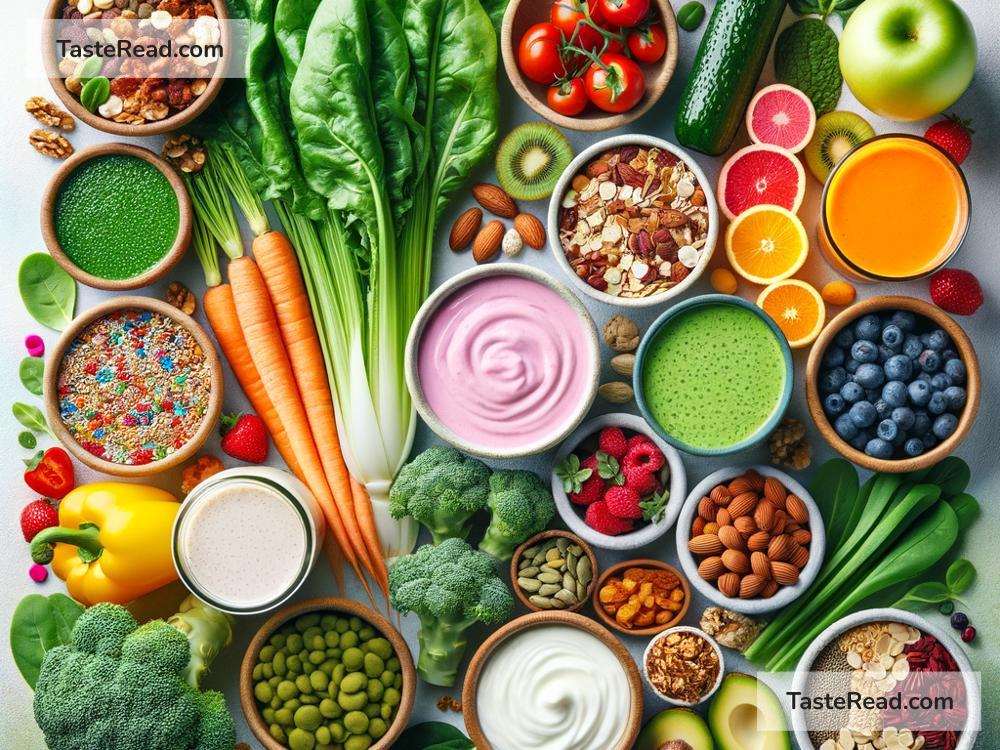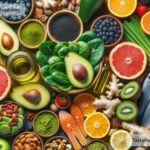Boost Your Health: Foods for Improving Your Microbiome Diversity
Your gut is home to trillions of tiny organisms like bacteria, fungi, and viruses, collectively known as your microbiome. These microorganisms play a crucial role in keeping you healthy. A diverse microbiome—a gut filled with different types of bacteria—has been linked to better digestion, a stronger immune system, and even improved mental health.
So, how can you improve the diversity of your microbiome? The answer lies in what you eat. Food provides fuel not just for your body, but also for the beneficial bacteria in your gut. In this blog, we’ll explore simple, tasty foods that help boost your microbiome diversity.
Why Microbiome Diversity Matters
Think of your gut microbiome like a rainforest. A healthy rainforest has a variety of plants and animals that work together to create balance. Similarly, a diverse microbiome has different types of bacteria that perform unique jobs, such as breaking down food, creating vitamins, and fighting off harmful bacteria.
Lack of diversity in your microbiome can lead to problems like bloating, poor digestion, and even an increased risk of chronic diseases such as diabetes or obesity. Eating a variety of gut-friendly foods is one of the best ways to promote microbiome diversity.
Foods to Improve Microbiome Diversity
Here are some simple and delicious foods to add to your plate. Each one helps your gut bacteria thrive and multiply.
1. Fiber-Rich Foods
Your gut bacteria love fiber. Fiber acts as a “food” for beneficial bacteria and helps them grow. Some fiber-rich foods to include in your diet are:
- Whole Grains: Brown rice, oats, quinoa, and barley are packed with fiber. Instead of white bread or pasta, try whole-grain versions.
- Fruits and Vegetables: Apples, bananas, broccoli, carrots, and leafy greens like spinach or kale are full of fiber. Try eating the skin of fruits (like apples) for an extra boost.
- Legumes: Lentils, chickpeas, and beans are also excellent sources of fiber.
The more variety you include, the better. Different bacteria feed on different types of fiber.
2. Fermented Foods
Fermented foods contain probiotics—live bacteria and yeast that can directly increase microbiome diversity. These foods not only boost good bacteria but also help promote a balanced gut. Try adding:
- Yogurt: Look for yogurt with “live active cultures” on the label. It’s a great snack that is packed with probiotics.
- Kefir: This tangy, yogurt-like drink is loaded with gut-friendly microbes.
- Sauerkraut and Kimchi: These fermented cabbage dishes are rich in beneficial bacteria and add flavor to meals.
- Pickles: Not all pickles are fermented, so look for versions that say “fermented” or “cultured” on the label.
- Miso and Tempeh: These fermented soybean products are common in Japanese and Indonesian dishes and are great for your gut.
3. Prebiotic Foods
Prebiotic foods are different from probiotics. While probiotics are live bacteria, prebiotics feed the bacteria already in your gut. Eating prebiotic-rich foods helps your good bacteria grow and stay healthy.
- Onions and Garlic: These flavorful vegetables contain compounds that feed gut bacteria.
- Asparagus and Leeks: Both are rich in prebiotic fiber.
- Bananas: Especially ripe bananas are great sources of prebiotics.
- Jerusalem Artichokes: Often called “sunchokes,” these knobby root vegetables are prebiotic powerhouses.
4. Colorful Fruits and Vegetables
Eating a rainbow of fruits and vegetables introduces a variety of nutrients and antioxidants into your gut. These nutrients help different bacteria thrive. Some colorful options include:
- Berries: Blueberries, strawberries, raspberries, and blackberries are rich in antioxidants.
- Sweet Potatoes: Their orange color comes from beta-carotene, which supports gut health.
- Beets: These vibrant red veggies have compounds that help beneficial bacteria grow.
5. Nuts and Seeds
Nuts and seeds are rich in compounds like healthy fats, fiber, and antioxidants that support gut bacteria growth. Some great options are:
- Almonds: High in fiber, almonds feed gut bacteria effectively.
- Walnuts: These are linked to improved gut health and microbiome diversity.
- Flaxseeds and Chia Seeds: Packed with fiber and omega-3s, these tiny seeds help both your gut and your heart.
6. Limit Processed Foods
While the focus is on what to eat, it’s also important to know what to avoid. Processed foods like chips, soda, and sugary snacks can harm your microbiome by encouraging the growth of harmful bacteria. Try to minimize these foods and focus on whole, fresh options instead.
How to Get Started
Improving your microbiome diversity doesn’t have to be complicated. Here are a few easy tips:
- Start small: Add one new gut-friendly food per week to your meals.
- Mix it up: Rotate your choices and eat a variety of fruits, vegetables, whole grains, nuts, and fermented foods.
- Eat the rainbow: Make your plate as colorful as possible for a diverse range of nutrients.
Final Thoughts
Your gut microbiome is like a team of helpers, working hard to keep you healthy. By eating a wide variety of fiber-rich, fermented, and prebiotic foods, you can support your gut bacteria and boost their diversity. The best part? These foods are delicious, easy to find, and fun to incorporate into your meals.
So, grab a banana, sprinkle some chia seeds on yogurt, or enjoy a bowl of quinoa and veggies. Small changes to your diet today can lead to big improvements in your microbiome—and your overall health—tomorrow!
Feel free to share your favorite gut-friendly recipes or tips in the comments below. Happy eating!


